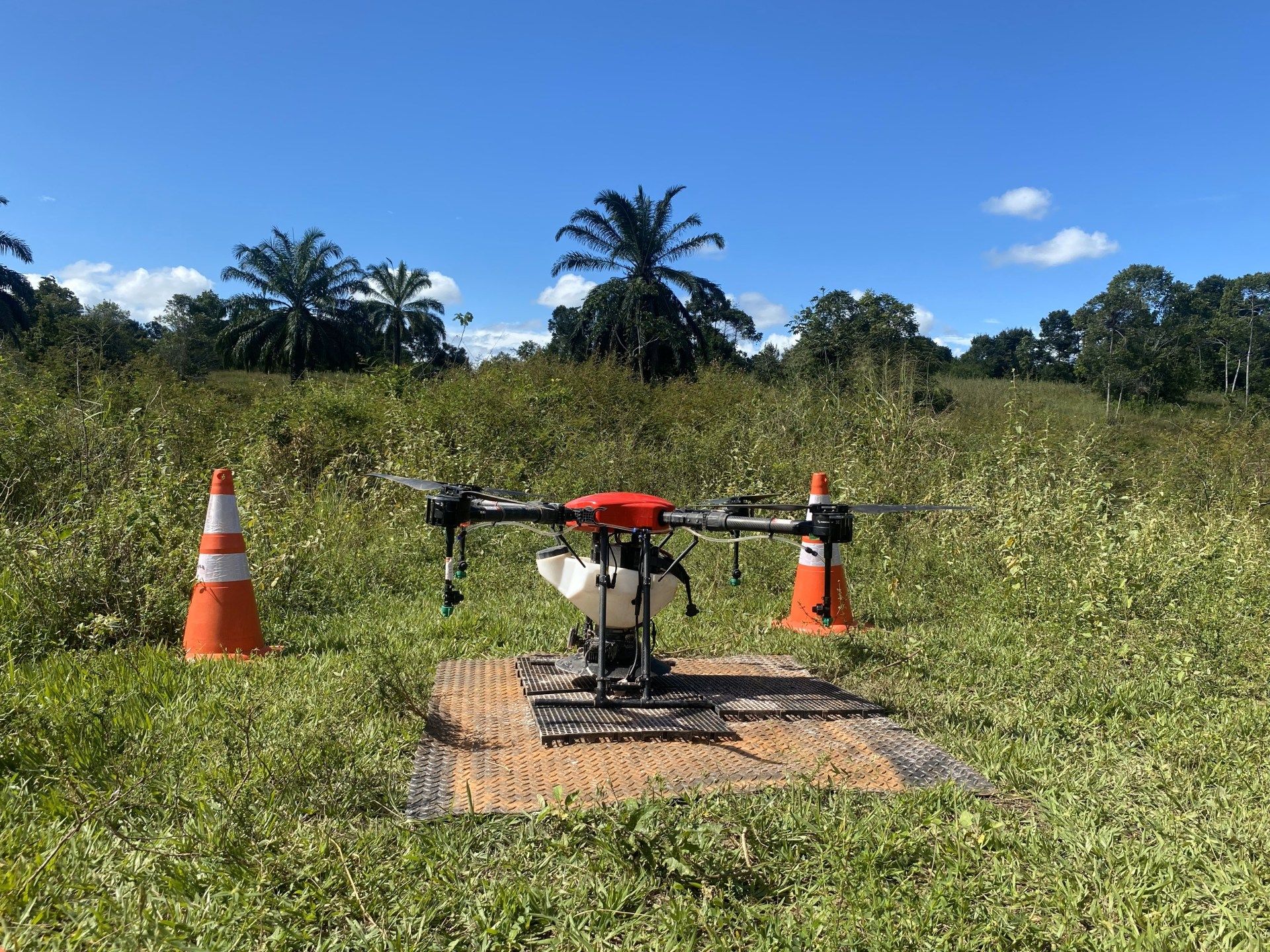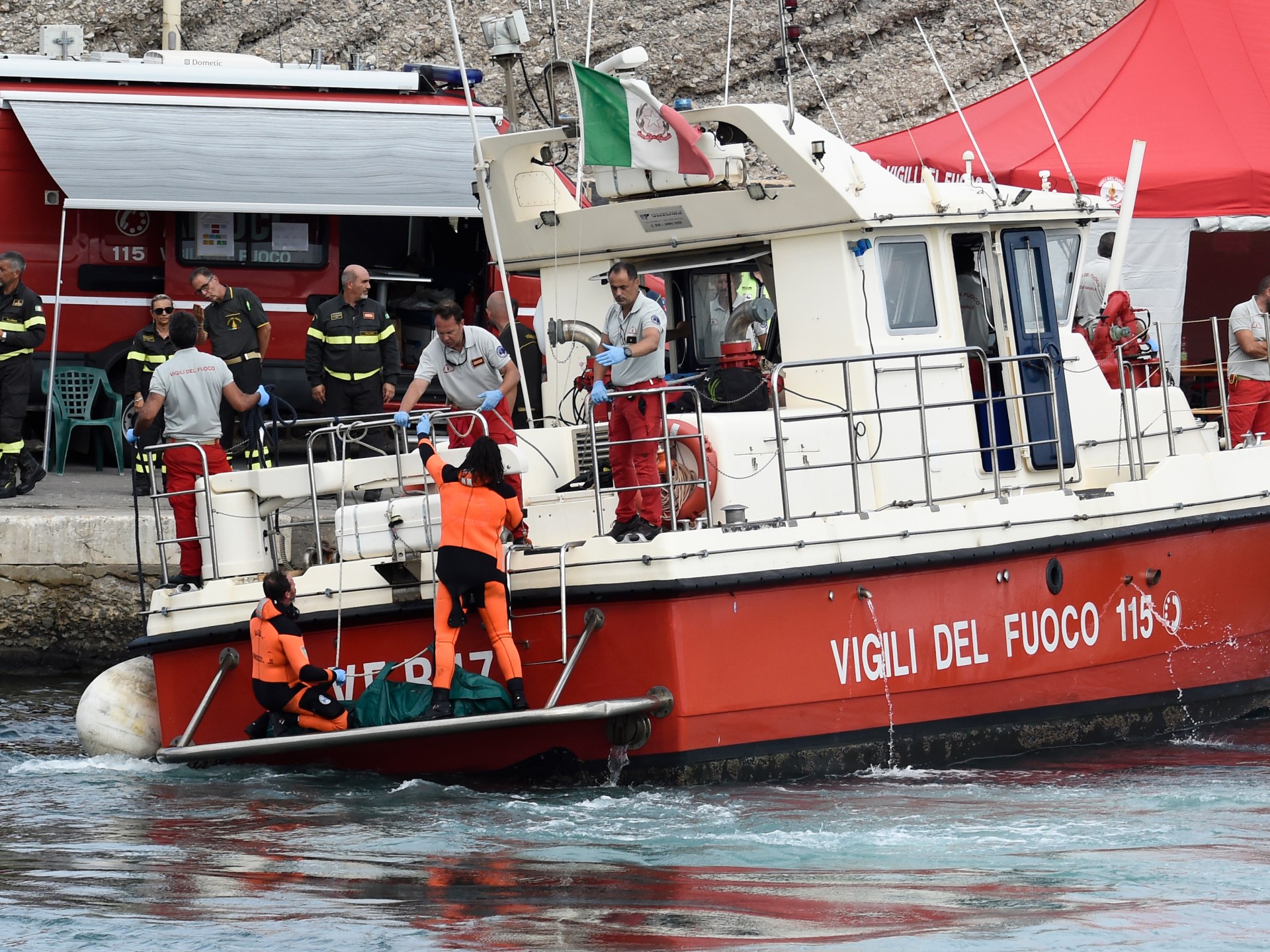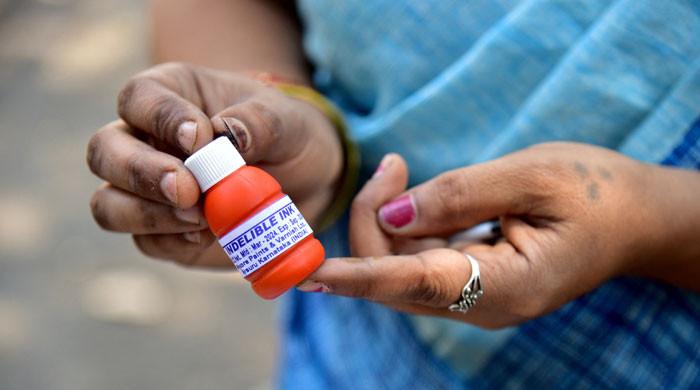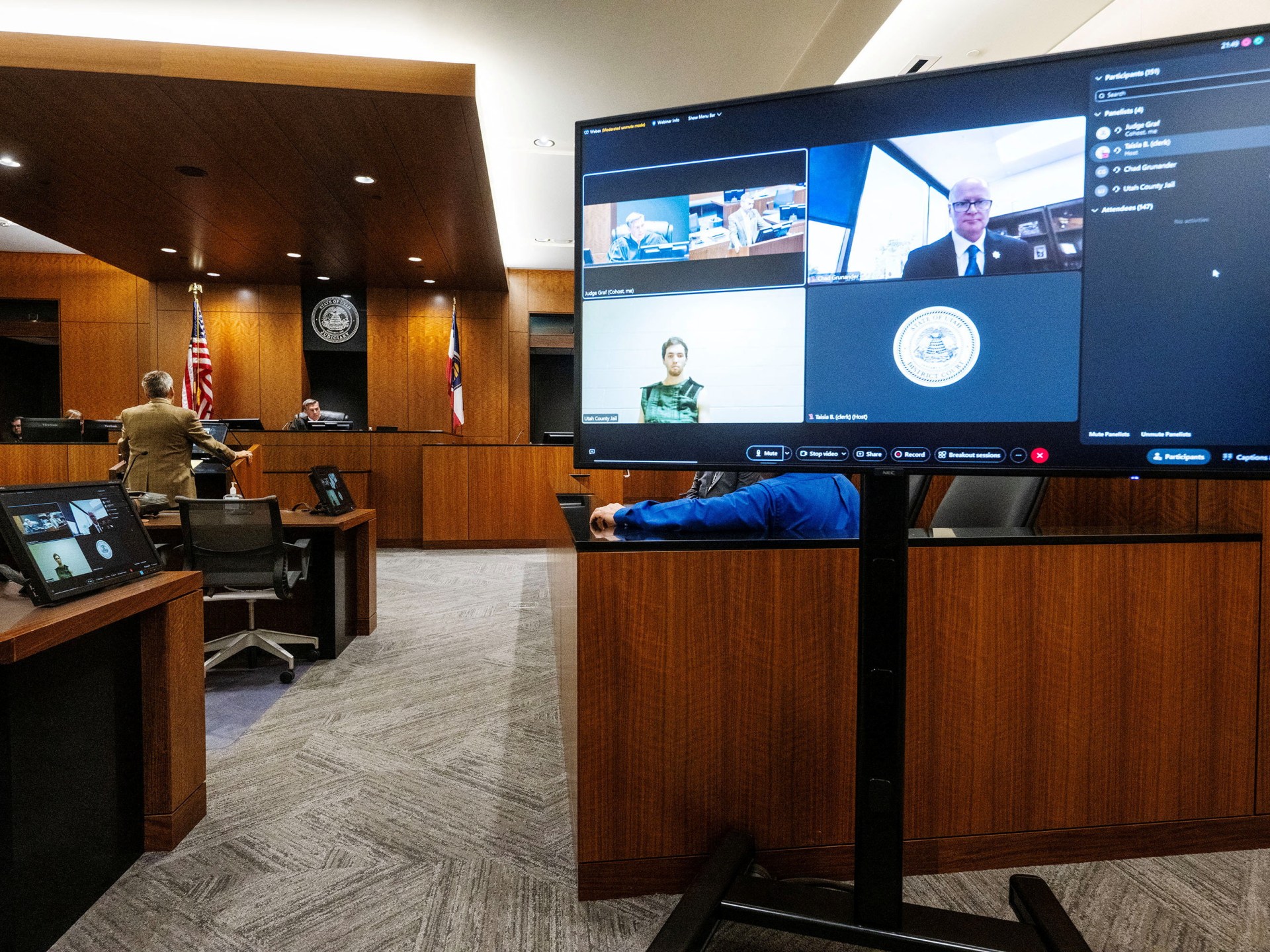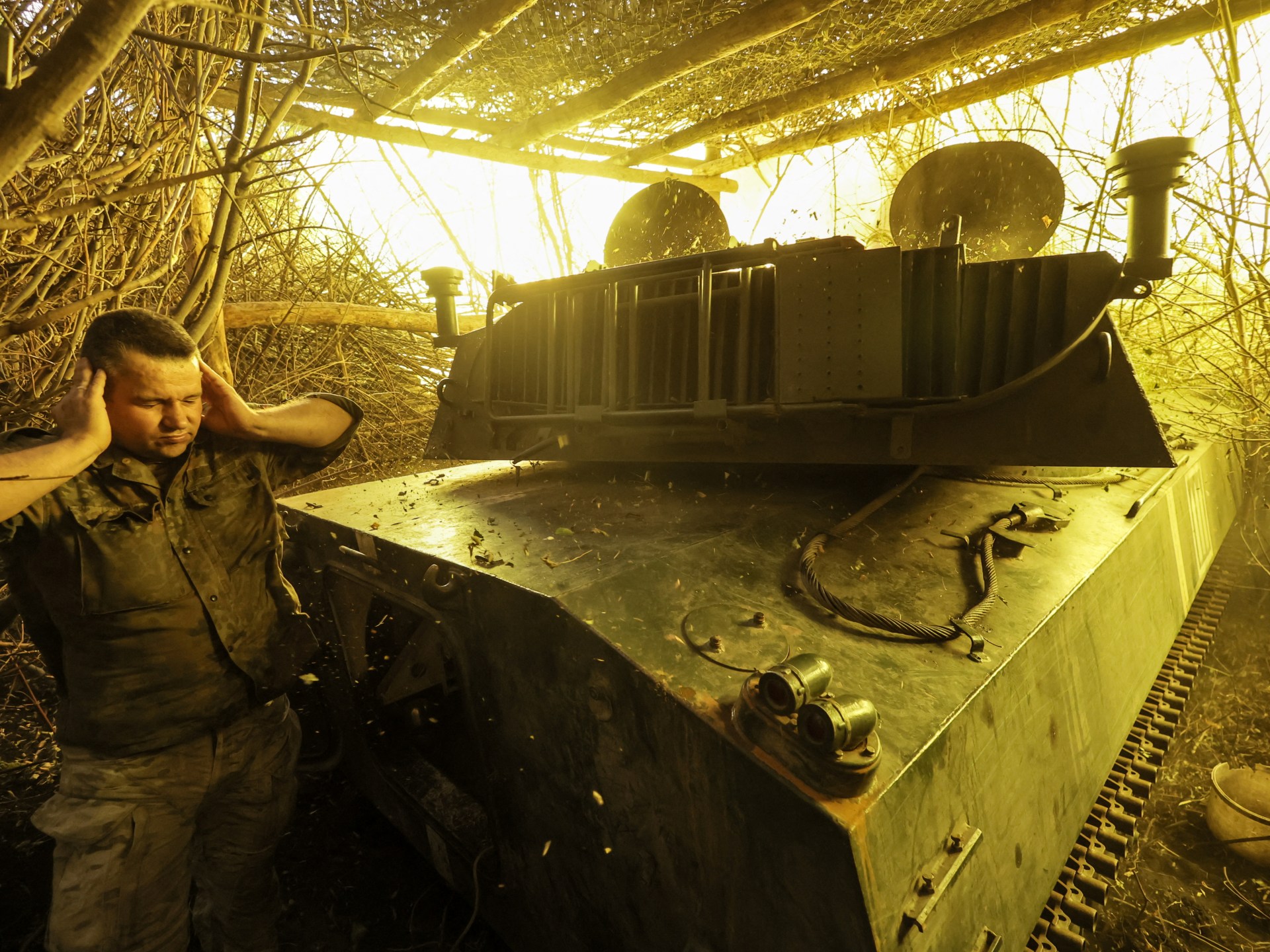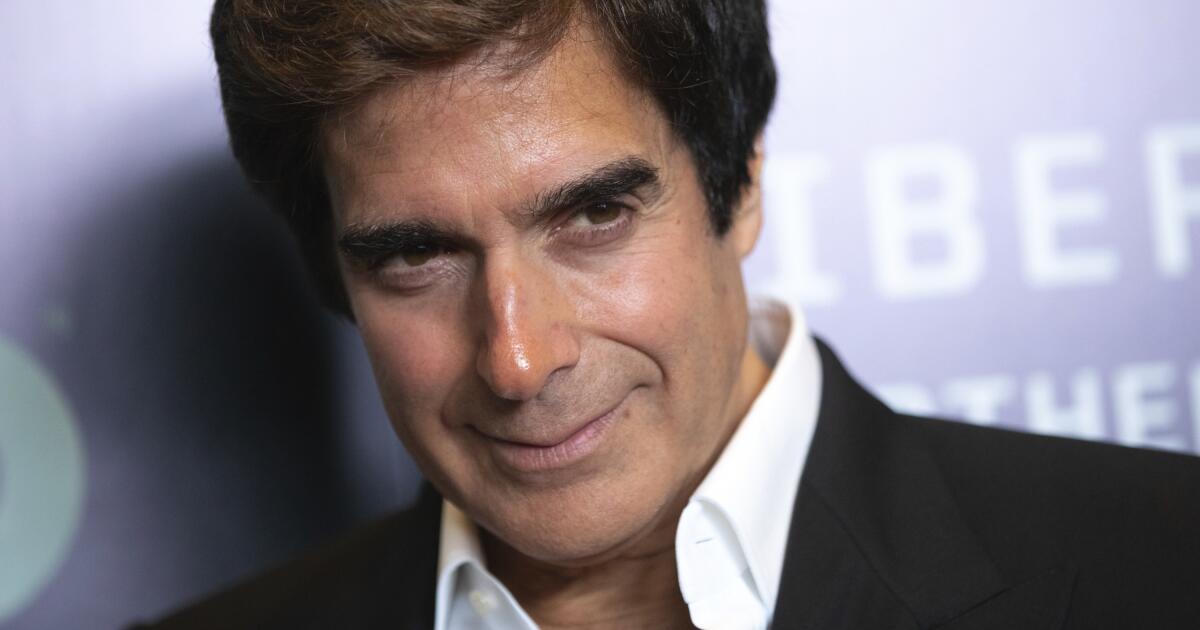Santa Cruz Cabrália, Bahia, Brazil – With a loud hum, the drone takes flight. Minutes later, the hum gives way to a distinctive rattle as the machine, suspended about 20 meters above the ground, begins to unload its precious cargo and a cocktail of seeds rains down onto the earth.
Over time, these seeds will grow into trees and eventually, it is hoped, a thriving forest will rise where there was once sparse vegetation.
That's what the startup that operates this drone is hoping for, a big contraption that looks a bit like a Pokémon ball with antennas.
The 54 hectares (133 acres) that have been severely degraded by agriculture and livestock in the Brazilian state of Bahia are just the beginning. French-Brazilian company Morfo has set a goal of restoring one million hectares of degraded land in Brazil by 2030, using seed-planting drones and a rigorously researched preparation and monitoring process.
How big is the problem of deforestation?
Deforestation is a rapidly growing problem in many countries. In Brazil, for example, deforestation in the Amazon destroyed an area larger than that of Spain between 2000 and 2018, as a study by the Amazon Network of Georeferenced Socio-Environmental Information (RAISG) showed in 2020. (INPE) shows that Amazon deforestation fell by 50 percent last year, forest loss continues to increase in other biomes, such as the Cerrado.
In Afghanistan, years of war and fighting have had a devastating effect on forests. Many have been completely destroyed. According to the research group World Rainforests, more than a third of Afghanistan's forests were destroyed between 1990 and 2005. By 2013, this figure had increased by half due to the additional problem of illegal logging.
And, in Colombia, internal violence and displacement have driven armed groups, farmers and ranchers into the forests, causing more deforestation. In 2016 alone, after some armed groups rejected a peace agreement, deforestation increased by 44 percent. Since then, President Gustavo Petro has overseen a decline in forest loss, up to 49 percent in 2023, according to Global Forest Watch, but deforestation has increased in other Amazon countries such as Bolivia.
Wildfires in many parts of the world, especially in Australia, California and around the Mediterranean in recent years, have also contributed to deforestation. More recently, thousands of people were evacuated last week due to wildfires in British Columbia and Alberta in Canada.

Why is forest restoration important?
“Climate change is happening, temperatures are rising, it's too late. So we need to be planting [trees] now,” says Adrien Pages, co-founder and CEO of Morfo.
Healthy forests are a fundamental resource in the fight against climate change; They provide valuable ecosystem services, such as carbon storage, temperature regulation, water resources and biodiversity conservation. According to the United Nations Development Program (UNDP), almost one billion people depend on forests for their livelihoods.
Simply conserving remaining forests is insufficient, which is why the United Nations has urged countries to fulfill their promises to restore a combined billion hectares of degraded land by 2030 to avoid large-scale ecosystem collapse.
But that is a daunting task. Brazil, for example, has promised to reforest 12 million hectares by the end of this decade, a goal that requires planting an area the size of England, or eight billion trees, according to ((o))eco, the Brazilian journalism platform. environmental. .

How can drone technology help?
Traditional reforestation, in which seedlings are grown in a nursery and then planted by hand, is effective but labor- and time-intensive. Drones can help speed up the process and reach dangerous or inaccessible areas for humans.
Morfo uses two drones adapted to transport 10 to 30 kg of seeds and can sow up to 50 hectares per day, piloted automatically or manually depending on the terrain. The height at which the drone flies and the density and type of seeds it disperses depend on a sowing plan, designed after an examination of the environmental conditions of the land.
“For us it's not about the drone. The most important thing is the preparation and the seeds,” says Pages.
Using data from satellite and drone images, as well as information collected by a team on the ground, data scientists use computer vision (a form of artificial intelligence) to develop models that can recognize trees and seed species. They are used to automate the creation of an optimal planting strategy and to monitor the results.
“The scalability of the solution is what is important to us. The initial costs of the project are going to be high to allow for proper diagnosis, investigation and preparation, but then the costs per hectare are relatively low and decrease as the area grows,” says Pages.

What types of seeds are used?
“Seed availability is one of the biggest concerns. And the survival rate of seeds is low, so you need to have a lot of seeds,” says Mikey Mohan, founder of ecoresolve, a US-based ecosystem restoration company.
Morfo is working to solve this problem. He has developed a biodegradable pod for planting smaller, more fragile seeds that have an 80 percent survival rate in the lab. The project in southern Bahia, a region where the Atlantic Forest began to be cleared for agriculture centuries ago and which is now invaded by monocultures of eucalyptus and sugar cane, is a testing ground for different planting methods to find the best way to grow native species.
He is also researching the resistance of these species to climate change to ensure that the trees planted here will still be standing in 100 years without the need for human intervention.
Overall, the Atlantic Forest, a biome that stretches along Brazil's densely populated coast, has lost more than 88 percent of its original tree cover, according to the NGO SOS Atlantic Forest.
“Our goal is to restore a functional ecosystem. The idea is to evaluate which species are most efficient and optimize the amount of seeds we use,” explains Morfo's scientific director, Emira Cherif.
Planting non-native cover plants first (low-growing vegetation, such as leguminous plants that protect the soil and provide other benefits, such as fixing nitrogen in the soil) can increase the germination rate of native pioneer species.

Sourcing seeds is one of the ways companies like Morfo include local communities in their restoration efforts. “Seed collection is a good way to value people, create long-lasting green jobs, and protect a standing, growing forest,” says Pages.
Last year, Morfo worked with 1,000 seed collectors across Brazil, like Crispim Barbosa de Jesús, a 51-year-old subsistence farmer who began supplementing his income by collecting seeds after taking a course offered by a local NGO.
Barbosa, who worked cutting down trees for charcoal in his youth, sees the forest from a new perspective since he became a seed collector. “Nature is so beautiful that you can see the resistance of the trees. “I feel better when I am in the forest,” he says, adding that “collecting seeds is a job that elevates people.” He currently leads a team of seven mostly young men, including two of his sons, to provide native seeds to a handful of clients, including Morfo.
Where else are drones used to replant forests?
A small but growing number of companies around the world are using drones for ecosystem restoration. A peer-reviewed paper Mohan co-authored in 2021 identified 10 such companies, many of which partnered with NGOs and helped restore areas affected by wildfires in Australia and North America.
In Brazil, small-scale nascent projects focus mainly on private land. Morfo has a new partnership with Rio de Janeiro city authorities, but the 500 hectares (1,236 acres) it has planted so far for other clients – in the Amazon and the Atlantic Forest – are all private lands that have been degraded by mining or agriculture.
How effective is drone reseeding?
The novelty of this reforestation method means there is little conclusive data on the long-term results of seed-planting drones. However, a year after Morfo's experiment in Bahia, preliminary signs are promising.
“Bahia suffered a big heat wave at the end of 2023. It was very dry, but you can see that our plants are working quite well thanks to [the cover plants]” says Cherif, whose team of researchers spent a week in April measuring and cataloging every sapling that has germinated since it was planted last year.
According to Mohan, collecting this type of data is key to expanding the use of drones. “To use drones on a larger scale, we need more research to understand the [seed] survival rate and how it can be increased,” he says. “You have to make sure that everything you plant can become a tree.”

